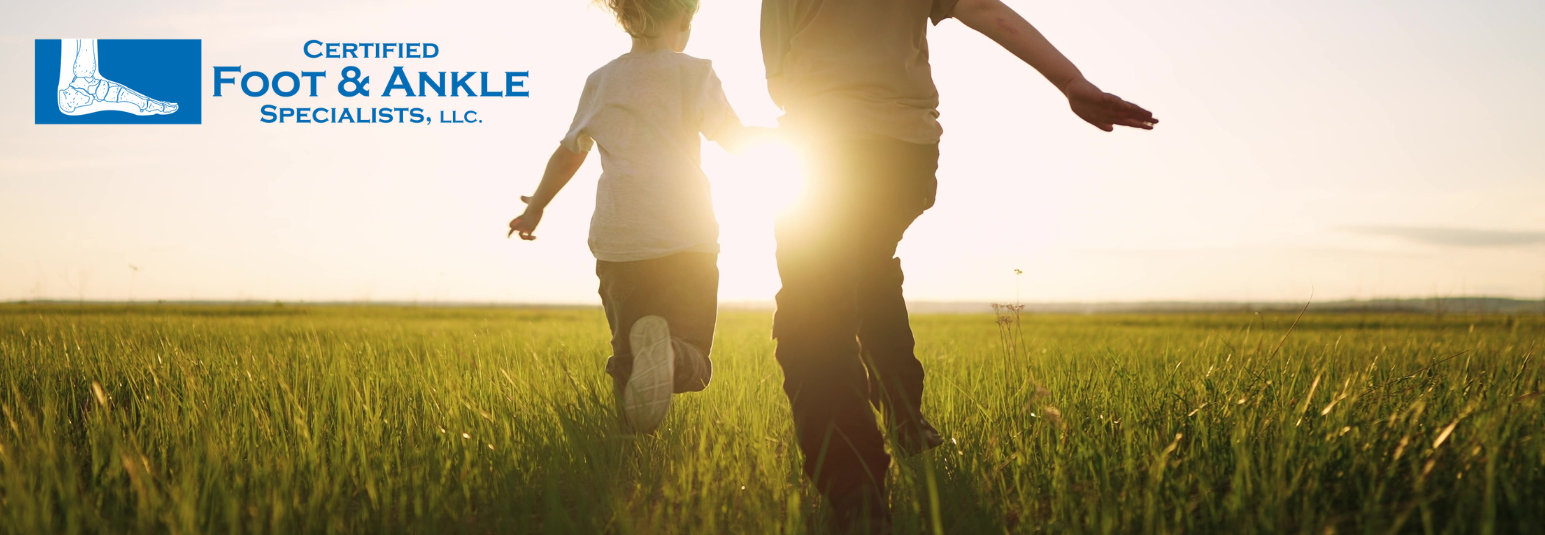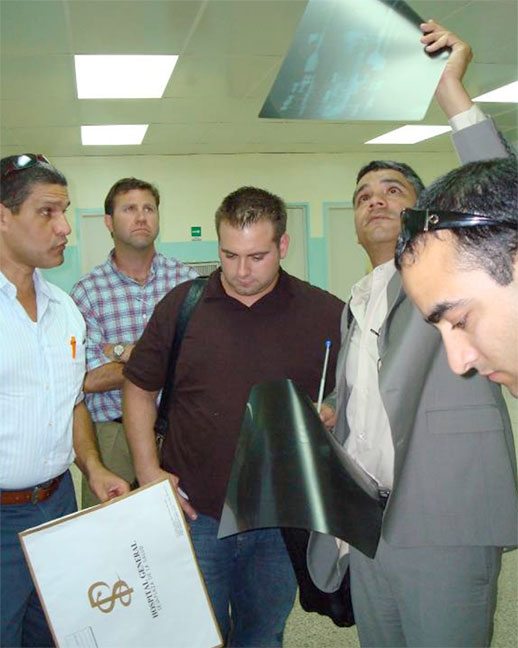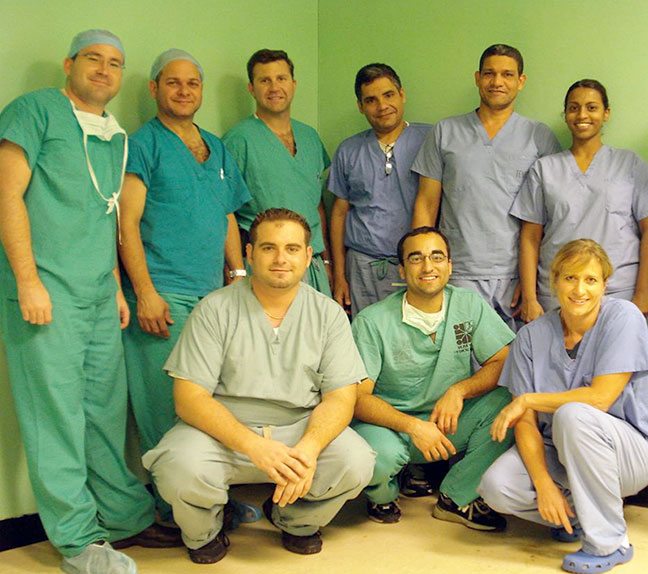The entire team at Certified Foot and Ankle Specialists understands the importance of giving back to their community, and participate in annual mission trips abroad. They believe that everyone deserves to walk pain-free are dedicated to helping those who don’t have access to care or can’t afford care.
Certified Foot and Ankle Specialists Take Action to Support Children Affected by Medicaid Cuts in Florida

In response to alarming reports by the Orlando Sentinel, which state that over 800,000 Florida residents were removed from the state’s Medicaid program between March and September, Certified Foot and Ankle Specialists has embarked on a charitable mission to address the healthcare needs of children adversely affected by these changes.
It has been reported that approximately 360,000 children have been severely impacted by these Medicaid removals, with many losing access to vital healthcare services. A significant portion of these terminations occurred due to procedural reasons, such as outdated contact information.
“At Certified Foot and Ankle Specialists, we firmly believe that every child in Florida should have access to comprehensive healthcare, regardless of insurance coverage. We often see children with acute problems such as infected ingrown toenails, lacerations, fractures, sprains, and foreign bodies which must be treated immediately by a physician. Other common pediatric conditions such as warts, heel pain, and flat feet, while not emergencies, are painful and have a negative impact on kids’ lives. Given the current economic climate, many families find it challenging to pay for expensive doctor visits out of pocket. To this end, we are committed to providing free medical care to children who have lost Medicaid coverage due to avoidable circumstances and administrative hurdles. Please visit our website for more information or call 855-550-FEET to schedule an appointment at an office near you.” – Dr. Kyle Kinmon, DPM (Founder, Certified Foot and Ankle Specialists)
About Certified Foot and Ankle Specialists:
Certified Foot & Ankle Specialists offer exceptional comprehensive lower extremity care within a compassionate and responsive setting. Our highly trained and board-certified doctors prioritize patient education and personalized care of the highest standards.
With 17 locations throughout South Florida, our team includes podiatrists, foot and ankle surgeons, wound care specialists, vascular and vein experts, interventional cardiologists, radiologists, and skilled support staff, ensuring convenient access to comprehensive care for various conditions, all under one roof.
Our mission extends beyond providing medical care, as we actively engage with the community to support those in need, especially children affected by changes in healthcare coverage.
Haiti Relief Mission for Limb Salvage

In the days following the 2010 Earthquake that devastated Port Au Prince, Haiti and surrounding areas, reports from colleagues on the ground were of mangling crush injuries with open fractures and compartment syndromes developing into severe infections and gangrene. Amputations were reported as being performed in high numbers due to lack of fixation supplies, equipment and expertise. It was felt that with proper supplies and implementation, some of these amputations could be prevented. This became the team’s mission.
Having worked on medical missions in the past, the team’s goal was to secure enough equipment and supplies to operate a complete lower extremity limb salvage team self sufficiently. This meant collecting everything from gowns and gloves, to antibiotics and anesthesia, to internal and external fixation, to suture, dressings, wound care supplies, and power and non power instrumentation, etc. To accomplish this, the team called on multiple vendors and hospitals for support and was able to secure everything they needed for a successful mission. They were put in touch with Dr. Bath Green and his team from Univerity of Miami’s Project Medishare and were able to use their tent in Haiti as a starting point for their mission.
Upon landing in Haiti and arriving to the tent, they found that the UM project was well staffed and equipped, so they decided to head into the city the next morning in search of a facility and people in need of their help.
The next morning’s ride through the city was shocking, witnessing the devastation to buildings and landscape, the homelessness, the stench of rotting corpses and the general chaos. They went to the Minister of Health’s office where they met a general surgeon from Colorado who recommended that our team go to CDTI, Hospital Sacre Coure.
This was a private hospital in Port Au Prince that was semi-operational on generator power, including two ORs and a procedure room. There were many patients in need of extremity surgery and relative supplies and personnel. After personally confirming the need, Dr. Kinmon began operating immediately while a team member went to gather the rest of the team.
The team performed between thirty and forty cases ranging from debridements and dressing changes under anesthesia to amputations and revisional amputations, open and closed reduction of fractures with internal and external fixation, cast applications, etc. Because of the fear of additional earthquakes, patients were kept on the brick paver ground in the parking lot of the hospital under tarps. The team was completely exposed to elements and they were lucky if the had a sheet and a pillow.
The team worked diligently to help as many people they could, with little thought to their own conditions. They slept in a vacant house that belonged to a friend of the hospital’s owner, which had electricity but no running water. Very few showers were taken and minimal shaving took place. Teeth were brushed and sponge baths taken with bottled water. Peanut butter and jelly sandwiches, power bars, bottled water and Red Bull were the extent of the nourishment, with the exception of one local delicacy one night, Velveeta Pizza.
They even experienced an earthquake and aftershock tremor while they were scrubbed into an open ankle fracture case. Dr. Kinmon and another doctor stayed inside with the anesthetized patient, and luckily they were able to stay and finish the case.
After completing everything they could, the doctors returned to Florida all on separate flights and in a taxi-cab style as they jumped onto flights with people they met on the runway. They left many supplies with the hospital in Haiti, including power surgical instrumentation and external fixation supplies for teams yet to come.
Overall, the trip was a success. Limbs and lives were undoubtedly saved as a result of the mission. The environment with which they performed their surgeries were poor, and concerns remained regarding complete recoveries. However, the doctors did what they could and impacted as many lives as they could in their short visit.
SOL Foundation Trip to Dominican Republic

After many months of anticipation, the date of the seventh Steps of Life Foundation (SOL) trip was finally confirmed for March. The team would fly into Santo Domingo but plan to drive almost three hours to the hotel in Santiago, which is the home of two hospitals where they planned to perform surgery.
The SOL Foundation spent the preceding months preparing and organizing equipment and supplies, which included surgical instrument trays, adding any missing instruments from previous trips, sterilizing gowns, gloves, drapes and trays. Many of these donations were kindly supplied by local companies who believe in the Foundation’s mission and the doctors behind it.
The team flew out of Ft. Lauderdale airport and were greeted in the DR by Drs. Aponte and Camilo. Before arriving in Santiago, they stopped at the presidential estate where they were to help fit a pair of orthotics for General Alcantara, the head of security for the President. This meeting went well and the General was very thankful for the orthotics. They then went to a medical supply store in Santo Domingo where they purchased 100 smooth wires for external fixators that were much needed next day in surgery.
The First Lady arranged a hotel stay for the team and, after checking in, they headed to the children’s hospital in Santiago, where a few patients were waiting for them.
Here they met three young boys who were to have clubfoot reconstructive surgery the next day. The team took pictures and preoperative planning was discussed among the group.
The team then headed to the Hospital Regional Universitario Jose Maria Cabral Y Baez, where they met the rest of our patients. Here, there were about 30 in-house patients and four who were waiting their arrival. Dr. Aponte and Dr. Camilo, with the help of the orthopedic residents at the hospital, brought the team around the hospital so they could screen several of the patients scheduled for surgery the next day. The hospital was well equipped and the team was able to set up their supplies so they would be ready for surgeries scheduled for the next day.
The doctors then headed back to the hotel where they evaluated the radiographs and decided what type of external fixator was to be constructed for each individual case. Dr. Marin led the team of Drs. Anderson, Auger, Balkaran, Kinmon, and McBroom in designing all of the external fixators for the first day of surgery. The doctors stayed up until 2 a.m. building the fixators in a conference room in the hotel.
The team of doctors headed to the hospital early the following morning, where the patients scheduled for surgery were already prepped by the orthopedic residents and ready for surgery. A total of 16 surgeries were performed on this day by the entire team of doctors and the hospital staff. The doctors then prepared everything for the next day and left for the hotel and then to meet a Representative of the First Lady at a traditional Dominican restaurant.
On the third day, the doctors arrived at the hospital around 8 a.m. where, once again, the orthopedic residents had all the patients ready for surgery. External fixators had been built in between cases the day before and they had six fixators ready. The team did realize that they were running short of supplies and one of the doctors managed to go into town and pick up whatever supplies he found find. They were able to find enough supplies for five surgeries and ended the busy day at 10 p.m.
A total of 50 patients were seen at bedside and in the pre-operative area in just a few days, and ages ranged from 3 years old to 88 years old. Surgery was performed on 29 people of those 50 people seen, and the team felt humbled and honored to be able to positively impact that many lives in such a short amount of time.